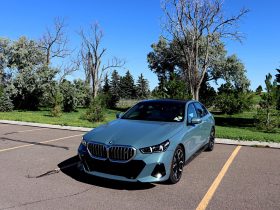Many exotic supercar makers saw the light of day this past decade. Only the three biggest names are using hybrid technology.
The past decade has seen a flurry of super cars, ushering an era of exotic, high-end performance renaissance. Names like Pagani, Koenigsegg and even the renewal of Bugatti made their way to the forefront, rivaling Ferrari, Porsche and McLaren. With the latter three now using hybrid performance, will the new kids on the block follow? Do they have enough resources and financial power to follow the big three?
The Three Exotics & The Challengers.
Green performance cars are all the rage but only a few are exploring them. Ferrari’s LaFerrari, McLaren P1 and Porsche’s 918 are the only exotics sporting a hybrid drivetrain to date. So far, Koenigsegg reported working on a compressed air hybrid, while Pagani has the Zonda F Cinque, a hybrid. No word yet on Bugatti.
Ferrari’s Hybrid, LaFerrari.
The name surprised a few, none more than the Pininfarina house who was supposed to design it. Much has been said about Ferrari’s first hybrid. It’s red hot, very cool, has plenty of performance and the prancing horse’s first hybrid.
Porsche 918.
The Porsche 918 has a lot of carbon and a hybrid drivetrain that will pulverize other Porsches. The only thing is, Porsche is rumored having trouble finding buyers. At $918,000, although the entry price was revisited at $845,000, it will be available on 9/18/203 and only 918 available — get it, 918? There are talks now of making it into a 4 door version.
Porsche effectively bypasses the hybrid stage and goes directly to plug-in hybrid, PHEV, the second after the Panamera S E-Hybrid. The 918 sports the company’s reworked 4.6L V8, developing 608 HP, 453 kW, helped with two electric motors delivering an additional 279 HP, 208 kW. The total output is 887 HP, 661 kW. You can drive the 918 on electricity alone, up to 18.
McLaren P1.
Finally we have McLaren, the same company that graced us with what will probably go in history as THE ultimate exotic, the McLaren F1. A bare bone, no technology driver’s car, where you sit in the middle with two seats slightly behind and to the side. After that, it’s you, the chassis and the engine. Electronics, be damned!
The McLaren P1 is an evolution of the MP4-12C and becomes a PHEV. Rear-wheel driven, the mid-engine is house in a carbon fiber monocoque and roof structure safety cage. The highly modified 3.8 L twin-turbocharged V8 produces 727 HP and is combined with a KERS electric motor producing 176 HP. Altogether, a 7 speed dual-clutch transmission gives it a total power output of 903 HP at 7500 RPM and 664 lb-ft of torque, 900Nm. If you inclined to do so, you can drive the P1 on electricity alone, up to 12 miles, 20 km at an average speed of 31 MPH, 50 km/h.
With the big three introducing hybrid and plug-in hybrid performance, it is hard not to wonder if the rest will follow. Of course, at some point all manufacturers wanting to reduce fuel consumption, become “greener” or simply raise the performance level of their cars will have to use electric motors. Whether simple hybrids, as in the LaFerrari, or more advanced plug-in hybrids, the Porsche 918 or McLaren P1, exotic super performance car builders will have to use electric motors.






